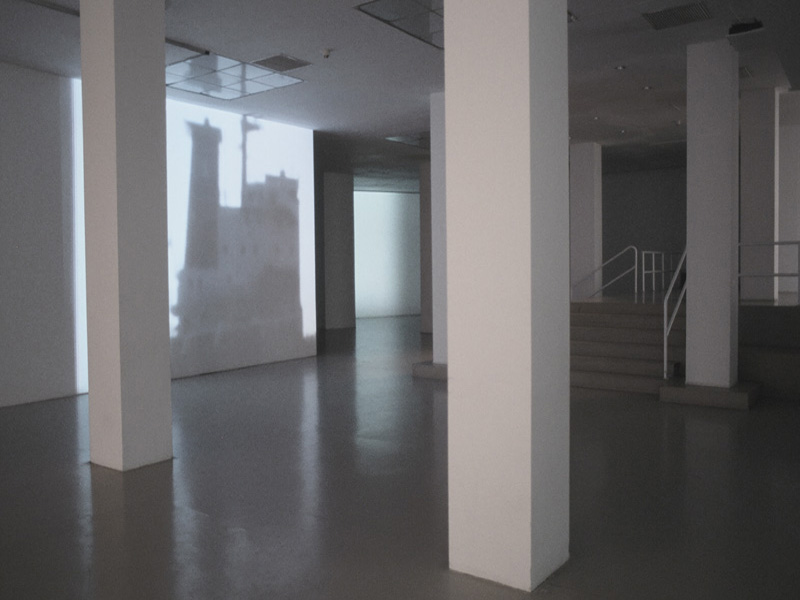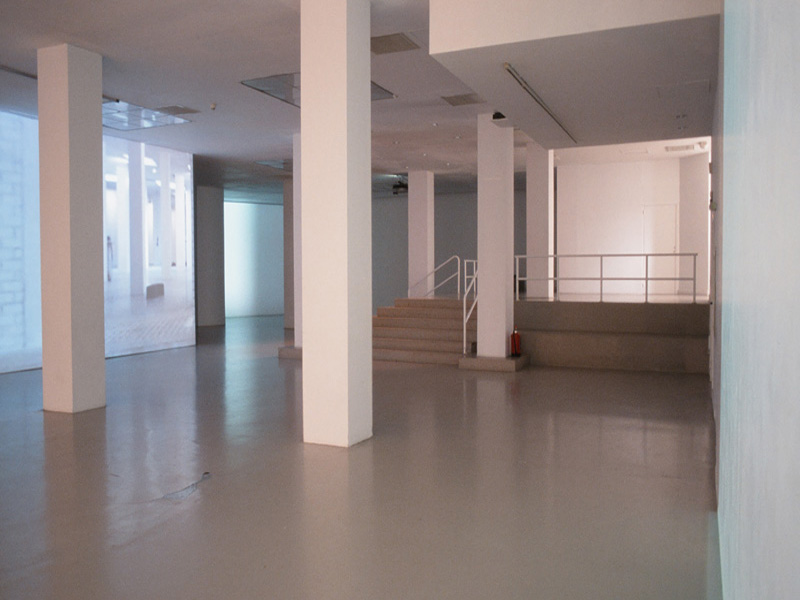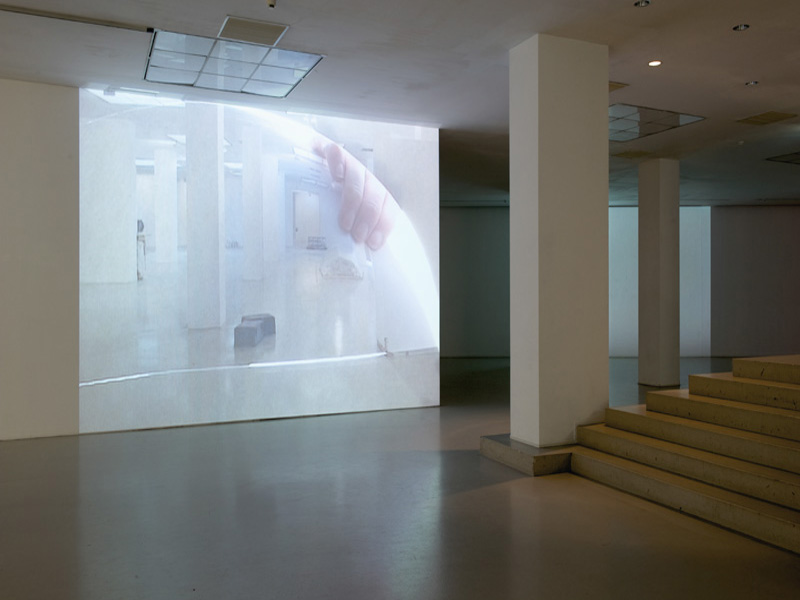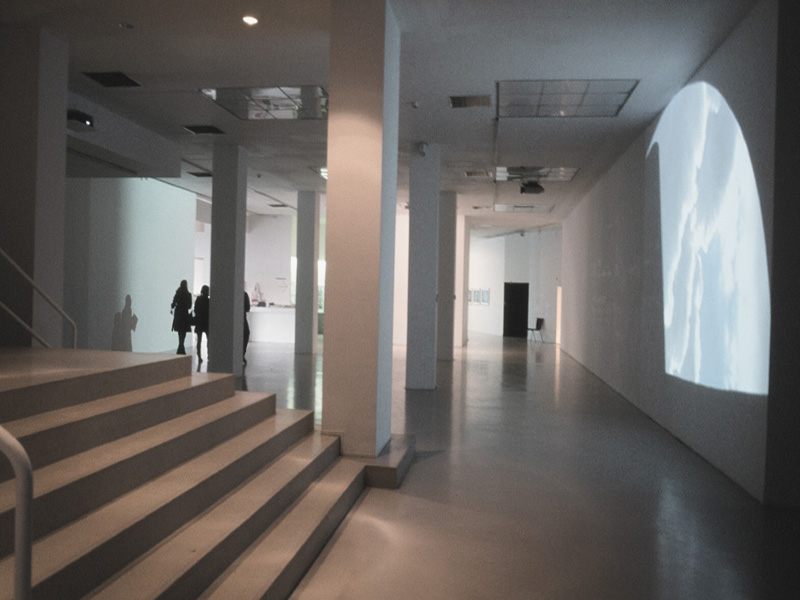Katleen Vermeir
- AMBULANTE ARCHITECTUUR
- AXIS MUNDI
- BELLE-VUE
- CADAVRE EXQUIS (BRUSSELLE, PART1)
- CIRCUITS
- DIACHRONICAL LANDSCAPE
- FITTING THE PICTURE
- HORTUS CONCLUSUS
- LIQUID ARCHITECTURE
- NO MAN'S LAND
- SEISMOGRAPHIC REGISTRATION OF A BUSRIDE DURING A LANDSCAPE
- TABLEAUX-VIVANTS
- TABLEAUX-VIVANTS (after Vermeer)
- TABLEAUX-VIVANTS (CONSTRUCTION MODELS)
- TABLEAUX-VIVANTS/ CONSTRUCTION (MODELS) #04
- THE HISTORY OF NEW YORK (FROM THE BEGINNING OF THE WORLD TO THE PRESENT)
- THE IDEAL CITY (PORTRAITS)
- THE IDEAL CITY (TWO BOATS)
- THE PASSING OF A PERFECT DAY (for GM-C)
- THE PASSING OF A PERFECT DAY (REVISITED)
- WATERDRAWING
- WHEN DID YOU LAST MOVE YOUR FURNITURE AROUND?
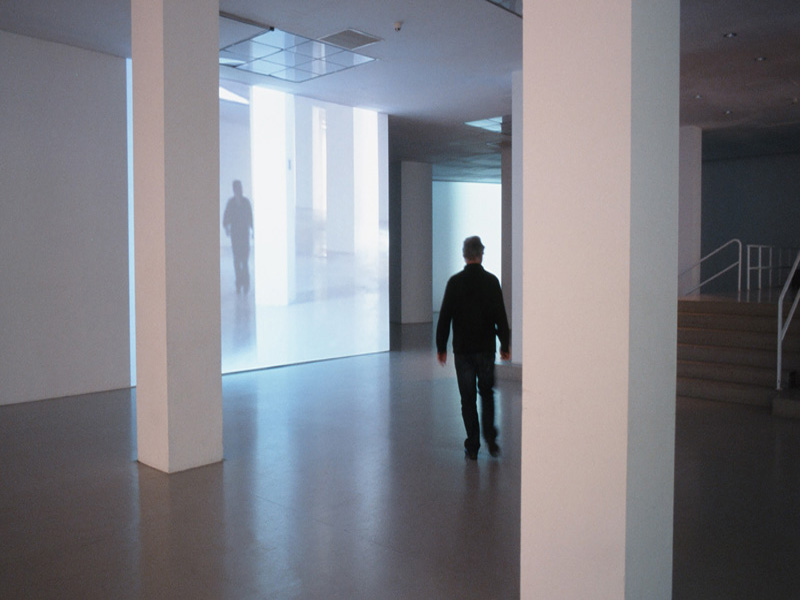
For this video-installation at Muhka I ‘revisited’ the work ‘The Passing of a Perfect Day (for G M-C) that was originally realized at Koraalberg Gallery, Antwerp in 2005. The starting point for both installations was a proposal of the American artist Gordon Matta-Clark. He wanted to cut a spherical quadrant out of the corner of a building in Antwerp, but receiving no authorization, his proposal was never carried out.
The installation in Muhka is not an homage, but an interpretation as well as an elaboration of Matta-Clark’s unrealized proposal and a reflection on the critical aspects of his work.
I wanted to expose the deterministic character of the museum building, triggering a new perception of the existing spaces. Critical voices arose quickly after the museum was opened in 1987. It was said that the former industrial building was hidden behind a layer of cosmetics, and was turned into a dazzling white labyrinth consisting of 'fake' walls and 'fake' ceilings, disconnected from daylight and from the view over the river Scheldt. In my mind’s eye I cut out a spherical quadrant from the façade of the museum. Suggesting the result of this intervention by projecting on the walls of the gallery the variations in the incidence of light and the moving shadows which would be the consequence. In my video installation I show the museum’s technicians destroying or building 'fake' walls. They bring about the rupture in the pristine museum spaces, only to change them again into perfect white containers. I also smuggle in views from the outside of the building, views not only of the river but also of real estate banners confronting the museum with the process of gentrification of the neighborhood, in part provoked by the museums presence.
THE PASSING OF A PERFECT DAY (REVISITED)
2009
2 wall-sized projections:
’Sun movements’ (40’, silent)
1 wall-sized projection:
‘The passing of a perfect day (revisited)’
(31’, silent)
2 LCD screens:’Script for the passing of a perfect day’’
(18’, sound)
Site-specific video installation for MuHKA, Antwerp (B)
Produced by Ltd.Ed.vzw


